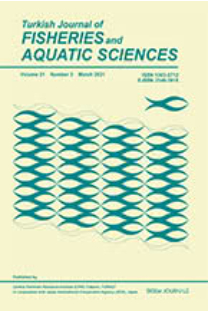Bio Economic Features for Aquaponic Systems in Egypt
___
Bailey, D.S., Rakocy, J.E., Cole, W.M., Shultz, K.A. and St Croix, U.S. 1997. Economic analysis of a commercial-scale aquaponic system for the production of tilapia and lettuce, in: Tilapia Aquaculture: Proceedings of the Fourth International Symposium on Tilapia in Aquaculture, Orlando, Florida:603-612.Blidariu, F. and Grozea, A. 2011. Increasing the Economical efficiency and sustainability ofindoorfish farming by means of aquaponics -Review. Animal Science and Biotechnologies, 44 (2): 1-8.
Essa, M.A.,Goda, A.M.A-S., Hanafy, M.A.,El-Shebly, A.A., Mohamed, R.A. and El-Ebiary, E.H. 2008. Small-scale fish culture: guiding models of aquaponics and net-enclosures fish farming in Egypt. Egyptian Journal of Aquatic Research, 34(3): 320-337.
Goda, A.M.A., Essa, M.A. Hassaan, M.S. and El-Sherif, M. 2014.Integrated aquaculture and hydroponics system using renewable energy:I. Fish performance & nutrients flow.Aquaculture America 2014 Conference, February 9-12, Seattle, Washington, USA.
Goodman, E.R. 2011. Aquaponics: Community and Economic Development. MSc thesis,Boston:Massachusetts Institute of Technology,Department of Urban.USA
Graber, A. and Junge, R. 2009.Aquaponic Systems: Nutrient recycling from fish wastewater by vegetable production.Desalination,246(1-3):147-156.doi:10.1016/j.desal.2008.03.048
Helal, A.M. and Essa, M.A. 2005.Evaluation and bio-economic study of marine cage culture in the west-northern shore of the Mediterranean Sea, Egypt. Alexandria Journal of Agricultural Research, 50(1): 1-9.
Holliman, J.B. 2006.An economic analysis of integrating hydroponic tomato production into an indoor recirculating aquacultural production system.MSc thesis, Graduate Faculty of Auburn University, Auburn, Alabama.UK
Mayer, E. 2012.Monitoring Pond Water Quality to Improve Production.Biomin, June 15, 2012
.Rakocy, J.E., Masser, M.P.andLosordo, T. M. 2006.Recirculating aquaculture tank production systems:aquaponics -integrating fish and plant culture. Southern Regional Aquaculture Center, 454:1-16.
Rupasinghe, J.W.andKennedy, J.O. 2010. Economic benefits of integrating a hydroponic-lettuce system into a barramundi fish production system. Aquaculture Economics andManagement,14:81-96. DOI: 10.1080/13657301003776631
Scott, D.C.B., Muir, J.F. and Robertson, D.A. 1993.Feasibility study of two offshore cage systems for the production of sea bream in the Mediterranean.In:Proc. World Aquaculture Society Conf., Torremolinos,Spain.
Stickney, R.R. 2005. Aquaculture an introduction test.CABI publication, Cambridge, USA, 265pp
- ISSN: 1303-2712
- Yayın Aralığı: 12
- Başlangıç: 2015
- Yayıncı: Su Ürünleri Merkez Araştırma Enstitüsü - Trabzon
Alireza NAZARI, Shahla ROOZBEHANI
Reproduction Efficiency of the Medicinal Leech Hirudo verbana Carena,1820
Mustafa CEYLAN, OSMAN ÇETİNKAYA, RAMAZAN KÜÇÜKKARA, Ufuk AKÇİMEN
DENİZ GÜNAY, DİLEK EMİROĞLU, MUSTAFA TOLGA TOLON, OSMAN ÖZDEN, HÜLYA SAYĞI
Modern Dinoflagellate Cyst Assemblages of Aliağa and Nemrut Bay: Influence of Industrial Pollution
HİLAL AYDIN, Emine YÜRÜR ERDEM, Serdar UZAR, FİLİZ KÜÇÜKSEZGİN
Magda-Ioana NENCİU, Cristian Lucian PETCU, Natalia ROSOİU, Tania ZAHARİA, Victor NITA, Valodia MAXİMOV, Daniela ROSİORU
Cryptobenthic Fauna of the Mussel Farm's Collectors
Evgeniya KARPOVA, Alexander BOLTACHEV, Svetlana STATKEVİCH, Olga DANYLYUK, Ilya TURBANOV
Impact of Climate Change on Aquaculture: The Need for Alternative Feed Components
Tamas SZBO, Ferenc RADICS, Adam BORSOS, Bela URBANYI
Results and Outcomes of Induced Breeding and Fry Rearing of Zander (Sander lucioperca L.)
Balazs CSORBAİ, Tamas SZABO, Gizella H. TAMAS, Eva KOVACS, Beatrix BERES, Adam NEMETH, Laszlo HORVATH
Heavy Metal Levels in Four Commercial Fishes Caught in Sinop Coasts of the Black Sea, Turkey
